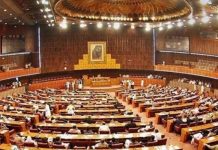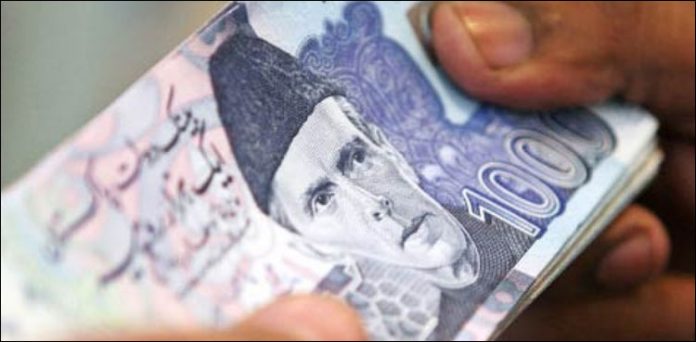PTI government had initiated a lowcost housing scheme and for attaining its purpose it has directed the banking sector to open their coffers to the potential buyers.
It is usually acknowledged that when banks pour funds into construction projects, it increases demand for products of dozens of allied industries like cement, iron and steel, paints, electrical fixtures and products.
This kind of productive investment ensures growth in the manufacturing sector and in the economy and in this context making banks bound to channelise a certain amount of funds towards housing and construction is the method of attaining this objective.
The PTI government has taken this route as it is desperate at reviving the economy that slumped 0.4 per cent in the last fiscal year compelling it to go for reviving productive sectors.
Following the guideline of the government, the State Bank of Pakistan is exhorting private sector banks to lend more to the private sector to kick-start the economic activity and the best way to do this is to make it mandatory for them to accelerate housing finance. The SBP wants every bank to make housing loans equal to 5 per cent of their total domestic private sector lending. Very interestingly, SBP has warned them of being penalised if they fail to do so and has promised to incentivise
them for meeting the targets.

Details of this carrot-and-stick show that the carrot part offers a reduced Cash Reserve Requirement (CRR) for the banks that meet or exceed their quarterly targets and the stick part carries an increase in their CRR if they fail to tow this policy. The SBP, in agreement with the banks, has already set four quarterly lending targets for them covering a full year until 31 December, 2021. Since the funds that banks place at the central bank as CRR carry no return, a reduced requirement means they can use the freed-up money for lending or investment and increased requirement means blocking more of their funds from earning any return.
This move of the SBP was a sharp method on its part to push banks to lend more to the housing sector but this alone cannot address the broader issue of lower private-sector credit off-take. The SBP however is pursuing the policy of goading banks for greater housing finance by setting mandatory credit limits and introducing a carrot-and-stick scheme is one thing but creating space for banks and reminding them of their responsibility of financial intermediation is another.
Between 1 July and 23 October, the federal government borrowed Rs.449 billion from banks for fiscal support against Rs.289 billion a year ago. If the government is serious in reviving the economy, it should keep its borrowing in check so that the private sector is not crowded out and the central bank should continue to urge banks to lend more to the private sector.
The disinterest exhibited by the banks in this respect becomes clear when it is observed that in a little less than four months of this fiscal year banks’ net lending to the private sector was negative by about Rs.96.5 billion. In the comparable period of the last year, too, banks had reported net negative lending but at a much smaller scale Rs.39.2 billion.
While pursuing such a policy it must be borne in mind that the private-sector credit off-take remains negative because of two things: first, overall demand in the economy is not rising as fast as was expected and, second, industries and businesses are using low-priced credit offered post–Covid-19 to retire previous loans obtained at higher interest rates.
In spite of a push from the government and the State Bank of Pakistan to encourage affordable housing in the country, the mortgage industry is slow to pick momentum as reflected by new data published by the central bank that shows that the net housing finance stock of the commercial banks has gone up by a mere Rs.13.7 billion to Rs.93.5 billion in the nine-month period between July and March.
However, this does not include house building loans advanced by the banks to their employees, the stock of which has risen to Rs.134.8 billion from Rs.109.8 billion during the same period. When combined the total housing loan stock of the banks rose to Rs.228.3 billion or slightly above 0.5 per cent of the country’s size of the economy, from Rs.189.6 billion in July.
Among many incentives given by the government last year to provide affordable housing to the low-middle-income households, it had offered a subsidy of Rs.300,000 per unit on the first 100,000 small houses and apartments in addition to significant interest rate subsidy to make mortgage affordable for the potential homeowners.

Along with it the SBP had given the banks targets to disburse at least 5 per cent of their private sector loan portfolio for housing and construction. The banks unable to meet the target were to be penalised by the regulator.
However, none of the policy initiatives seems to have worked out the way the government had expected. Compared to Pakistan, India has increased the mortgage financing from less than 1 per cent of its GDP to over 10 per cent in the last 15 years.
There are multiple reasons for the slow uptake in housing finance even though banks are willing to expand in this category and among other factors, there are supply side issues related to the availability of low-cost housing units in the market for the low-middle-income households the government wants to have their own houses or apartments. No builder or developer has so far shown interest in this segment because of the low price cap.
Besides, the majority of the prospective borrowers are not bankable as they do not have the kind of income profile or credit history to become eligible for a bank loan. So there is also a demand side impediment to the development of housing finance.
Nevertheless, the housing supply and demand issues apart, the banks will always be conservative in advancing housing loans as long as the government does not formulate new foreclosure laws giving the lenders the right to repossess the property in case of a default without having to seek permission from the court.
The banks want protection against defaults to safeguard the interests of their depositors and shareholders, as well as litigation against them that last for years. Recently, the government has made important changes in its earlier interest rate subsidy scheme for the housing sector for first-time homeowners, enhancing bank loan limits for the different categories of houses, apartments and flats and reducing interest rates for the borrowers.
Besides, the cap on the market value of housing units above Rs.3.5 million for the middle/higher income households has been removed. Additionally, the government has also brought in microfinance banks into housing finance by allowing them to lend up to Rs.2 million for purchase of houses, flats and apartments up to the size of five-marla or 125 sq yards or with maximum covered area of 1250sq ft. The reduction in the price and enhancement of the loan limits is expected by the authorities to encourage builders and developers to jump into low-cost or affordable housing. But the bankers are not very hopeful.
For the push to affordable housing to succeed, the government will first have to construct smaller, high-rise apartment buildings on the state land for government employees. Once that initiative takes roots and creates incentives for the private builders and developers,only then any meaningful growth in mortgage financing may be seen by the banks.
This article originally appeared in The Weekender and has been reproduced with permission





























